The Art of Science—Versailles at the Science Museum, London
Have you ever wondered how it would feel to witness the grandeur and opulence of the 18th-century French court? Then you might want to go to London.
Edoardo Cesarino 19 December 2024
The exhibition, Paraventi: Folding Screens from the 17th to 21st Centuries at Milan’s Fondazione Prada, will be on view until February 22nd, 2024. Curated by Nicholas Cullinan, it showcases the origins and developments of paraventi in art and interior design. While it recognizes the legacy from China and Japan, the exhibition delves into the subject’s many possibilities, including its role as a piece of furniture since modern times and its contemporary rendition as a sculpture stripped of functionality.
The Folding Screens exhibition is hosted at the Milan headquarters of Fondazione Prada. Founded in 1993 by the renowned Italian fashion designer Miuccia Prada and businessman Patrizio Bertelli, Fondazione is a multidisciplinary cultural hub that fosters art exhibitions, film festivals, scientific activities, and musical projects.
Fondazione Prada’s headquarters was established in 2015 by redeveloping a southern Milan area where an old distillery once stood. The original constructs underwent restoration, with new structures such as the Tower, Podium, and Cinema fitted into the former industrial complex.
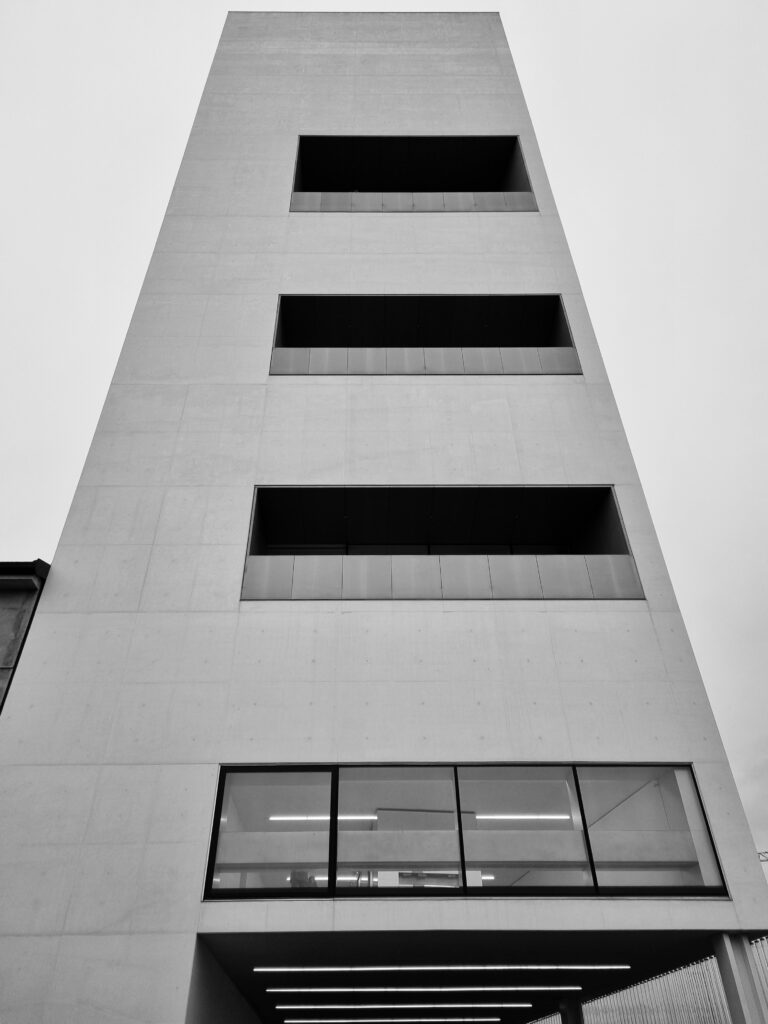
The Tower of Fondazione Prada, Milan, Italy. Photo by the author.
The project was supervised by the OMA studio led by Dutch architect Rem Koolhaas.
In addition to the main site, Fondazione encompasses the Osservatorio, an exhibition space within the Galleria Vittorio Emanuele II, and the Palazzo Ca’ Corner della Regina of Venice.
These spaces house a permanent collection and various temporary ones. The Cinema shows a range of classic films and special initiatives. The Library is home to the Bar Luce, designed by director Wes Anderson, and the Tower features a restaurant on the seventh floor overlooking the city of Milan.
The exhibition traces the evolution of the folding screen from its beginnings until the present day, either as a piece of furniture or an artistic sculpture.
The folding screen, or paravento in Italian, first emerged in China during the decline of the Zhou dynasty. It was richly illustrated and served as a medium for introspection and spiritual contemplation. The installation then traveled to Japan, where it guarded the households against evil spirits. Eventually, it made its way to the West, where it was utilized as a theatrical element during the Baroque period.
From the late 19th through the 20th centuries, the folding screen became the subject of multiple artistic and cultural processes, transforming from a functioning design component to an artwork. Many artists were intrigued by this visual potential; they have reinterpreted the paravento, experimenting with various dimensions and materials, allowing their creativity to flourish. Consequently, the latter has since morphed into a form of sculpture, transcending its conventional role as furniture.
The exhibition is located at the Podium and extends across two floors. On the first floor, visitors will find seven themes divided by curved, towering plexiglass panels. Like transparent screens, these installations allow visitors to look through them to spot the diverse ornamental elements present. They also outline visually the various cultures that have gradually contributed to the aesthetic changes.
The journey begins with Readings, East and West, where visitors can marvel at ancient folding screens displayed in half-light to facilitate conservation. Visitors can look at these exhibits from left to right or vice versa. Either way, there will be a sense of traveling across time and space with the fluctuating landscapes and cartographies. Such an arrangement brings to the forefront themes of discovering new worlds and connecting with diverse cultures.
Continuing to the Public/Private section, the folding screens engage with topics of interiority and intimacy as they probe into the realm of private desire. Here, the exhibition includes the work of the American painter William N. Copley, which examines the segregation of genders and patriarchy. These apparatuses, as reflected in his work, reduce women to subordinate roles such as housewives or prostitutes. The vibrant colors and flattened renditions of female bodies convey the message with an abstract, somewhat comic-like touch.
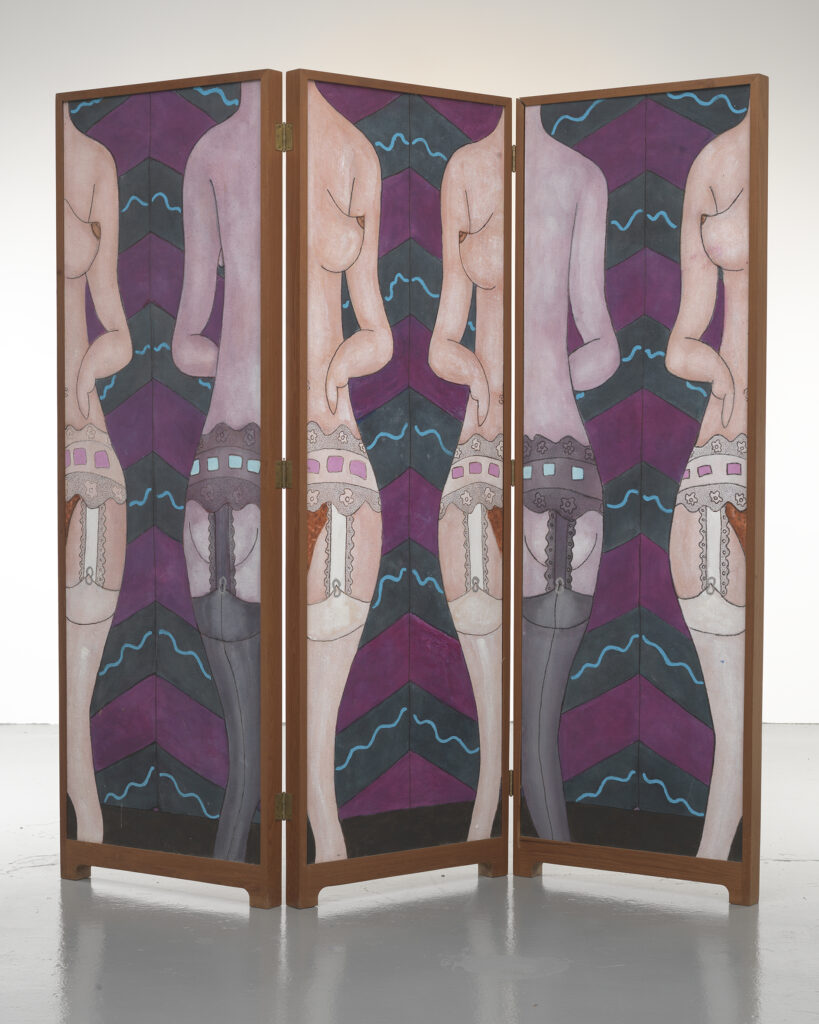
William N. Copley, Konku, 1982. Collection Von Storch, Cologne, Germany. Photo: Christopher Burke © 2023 William N. Copley Estate / Artists Rights Society (ARS), New York.
This section also showcases the work of the South African painter Lisa Brice on an elongated, multiple-paneled screen that draws viewers into a potent feminist and somewhat claustrophobic space. Within this space, one sees women in motion and interacting with each other, and feels the collective strength and sense of independence exuding from it. The energized female figures serve to uphold freedom and everyone’s capacity to exercise such a right to the fullest.
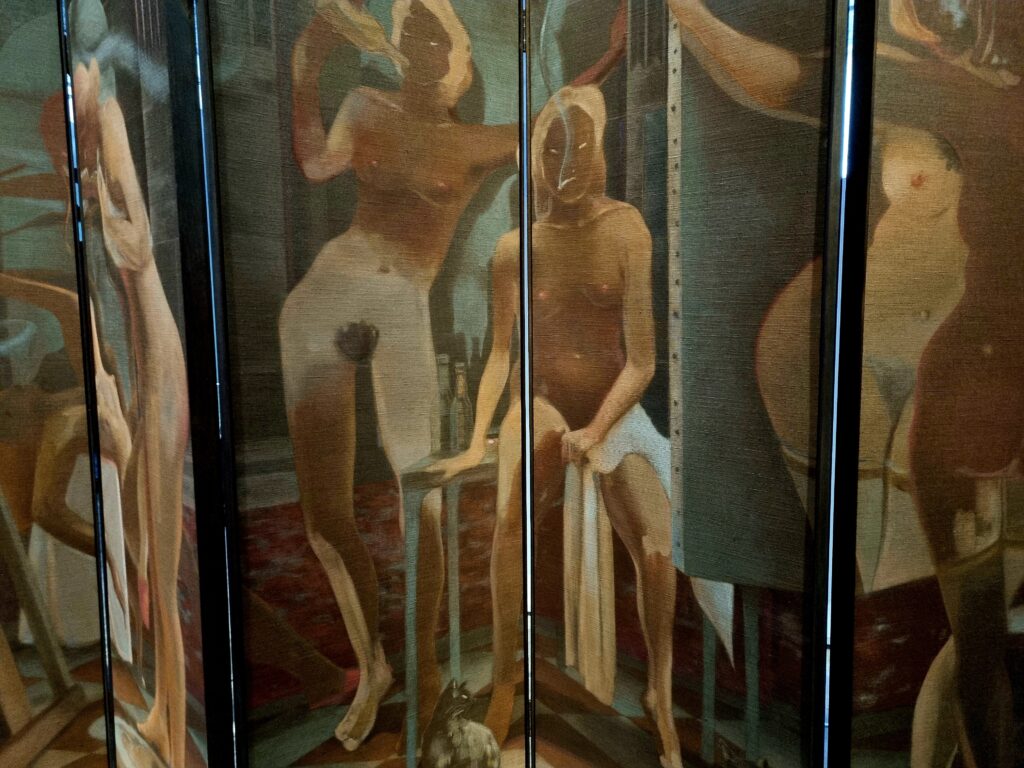
Lisa Brice, Untitled, 2022. Detail. Photo by the author.
The exhibition’s narratives then arrive at our present times epitomized by digitalism, conversing with the almost futuristic use of the paravento. We are walking through the Split Screens section. Here, the screen no longer serves solely as a shield. It also becomes a window, displaying digital projections of visual narratives from the outside world. Technical interventions showcase how digital immersion blends the imaginary with our day-to-day reality. It proceeds to prompt us visitors to ponder what the ubiquity of smartphones, tablets, laptops, and televisions could implicate as they become integral to our daily lives.
The liminal Four Seasons area is a niche for contemplating the passage of time and the change in space through the process of abstraction. Right next to it, through Propaganda, visitors are challenged to reflect on the rhetoric of politics. The World of Interiors segment inquires about the nature of art and the classification of everyday objects, including furniture. Can a folding screen, commonly found in households, be considered a work of art? Who or what defines the boundaries between “highbrow” and “popular” art?
A possible answer lies in Francis Bacon‘s dialectical Painted Screen. Despite its straightforward and minimalist appearance, the screen is groundbreaking due to its mundanity. It appears unassuming but thought-provoking to be both an everyday object and a work of art. The duality it inhabits is not irrelevant to how Bacon became an artist. He found his voice by studying his predecessors like De Chirico and Picasso. He discovered his form of expression using the religious three-panel painting format, or triptych and then promoted it among his contemporaries. With such an interplay between art movements and individual experiences, a composition like this folding screen can finally arrive as a piece of furniture in our homes.
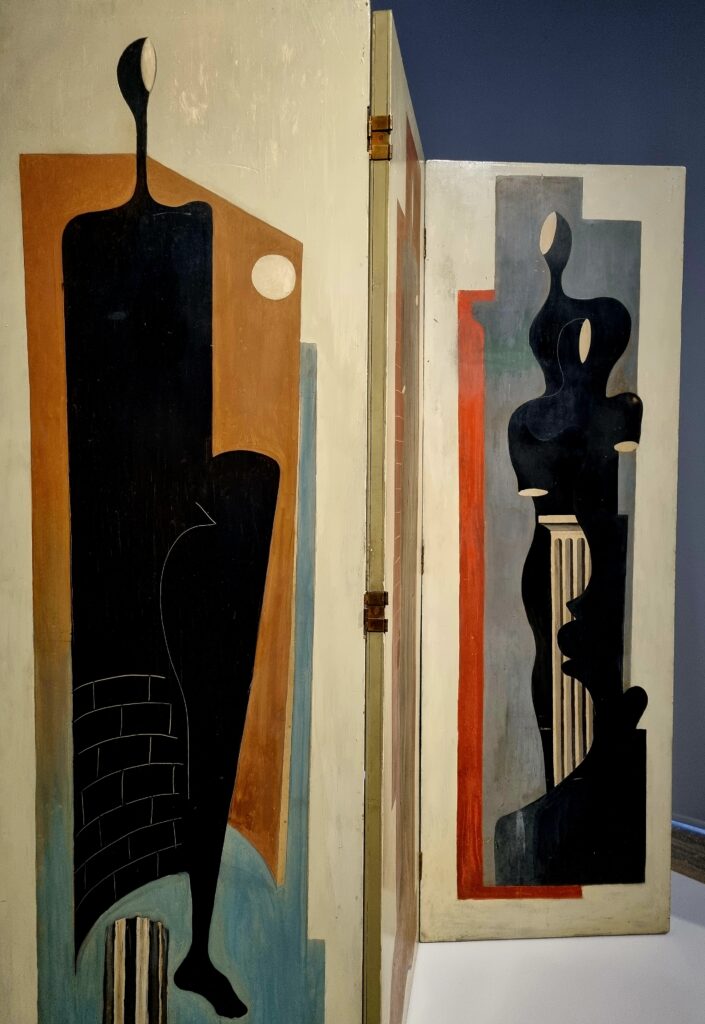
Francis Bacon, Painted Screen, 1929. Detail. Photo by the author.
Located on the ground level is another section called Parody/Paradox. It makes a pleasant contradiction out of surrealist and Dadaist screens interrogating the absurd. Notable contributions include the menacing grater designed by British-Palestinian artist Mona Hatoum.
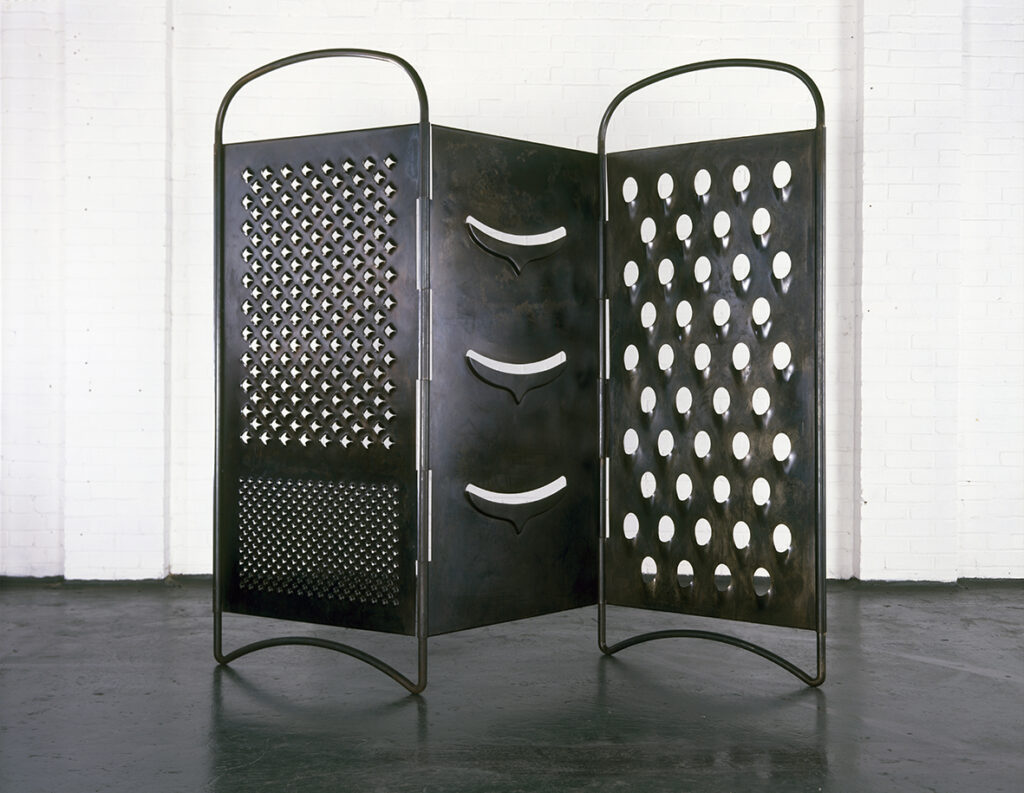
Mona Hatoum, Grater Divide, 2002. © Mona Hatoum Courtesy White Cube (Photo: Iain Dickens)
A flight of stairs beckons visitors to the final hall of the exhibition. Along the doorway, Jean Prouvé‘s monumental screen signals a shift in perspective. Inspired by airplanes, this installation adapts an industrial aesthetic that gestures at the malleability of a screen both in dimensionality and in terms of its own materiality.
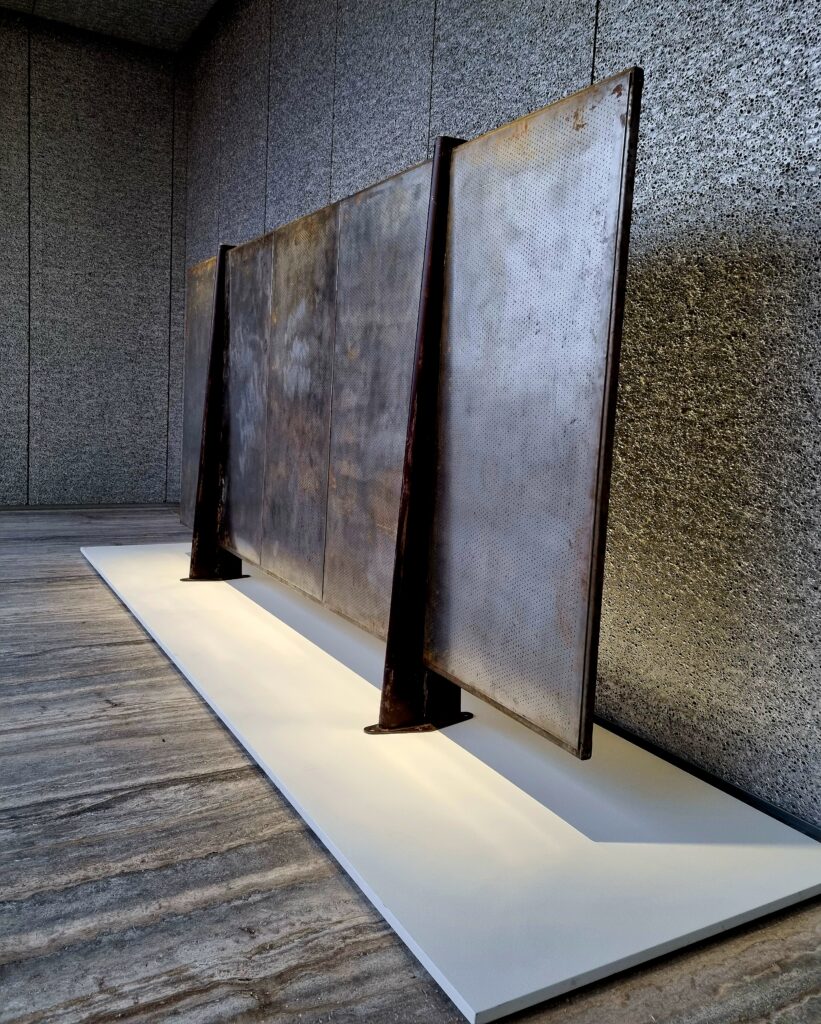
Jean Pouvré, Panneau séparatif insonorisé, créé pour le Centre national d’enseignement technique de Cachan, 1955. Photo by the author.
The final exhibition hall, titled Either/Or/Neither/Nor, comes as an upscaled game of dominoes, with screens in place of tiles. The title triggers questions for the visitor entering the room: Is the folding screen a piece of furniture? Or is it a sculpture? It is neither a piece of furniture nor a sculpture, or rather, it is both.
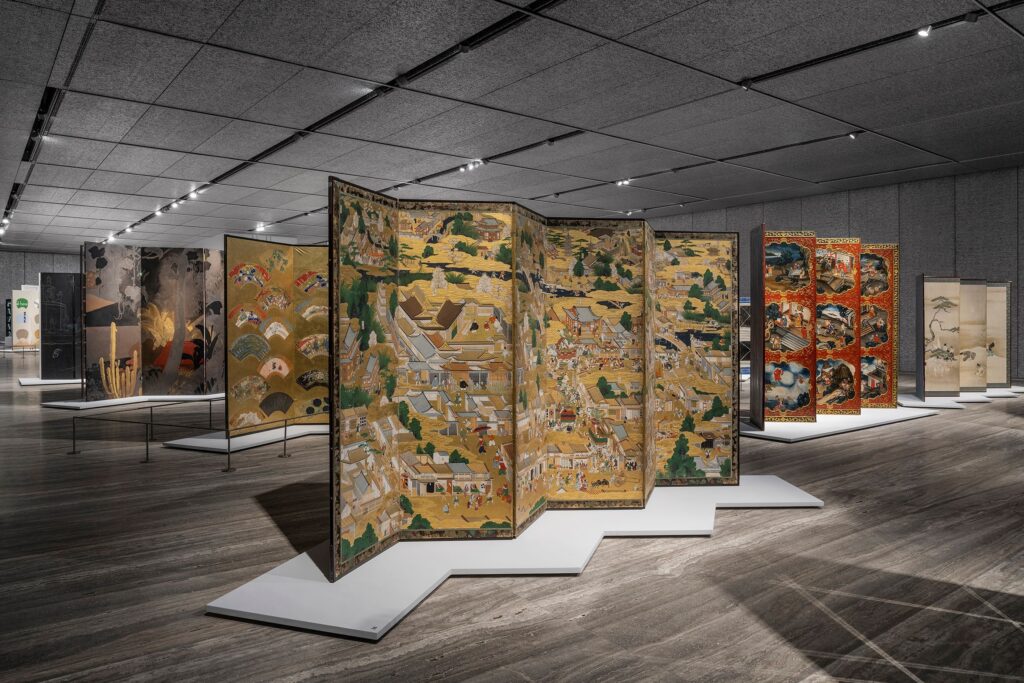
Exhibition view of Paraventi: Folding Screens from the 17th to 21st Centuries, Fondazione Prada, Milan, Italy. Photo: Delfino Sisto Legnani and Alessandro Saletta–DSL Studio. Courtesy of Fondazione Prada.
On the outside layers, visitors will find the oldest Chinese and Japanese pieces, while further inside are works from modernists such as Pablo Picasso, who incorporates colors and shapes reminiscent of late Cubism. Not far from it, the eclectic René Magritte departs from his typical style, presenting a tangible object featuring three reality-bending stylized figures that seem to be masking themselves when viewed from the other side.
Toward the exit, the exhibition compiles the paraventi re-imagined by contemporary artists as either concept arts or pure semiotic extractions. With personalized visions, these attempts reveal the object’s history and the cultural factors shaping it.
One notable example is the work of Iranian artist Kamrooz Aram, who presents a monumental paravento informed by Natalia Goncharova’s Spring in form and scale but with a typical geometric language from Iranian architecture.
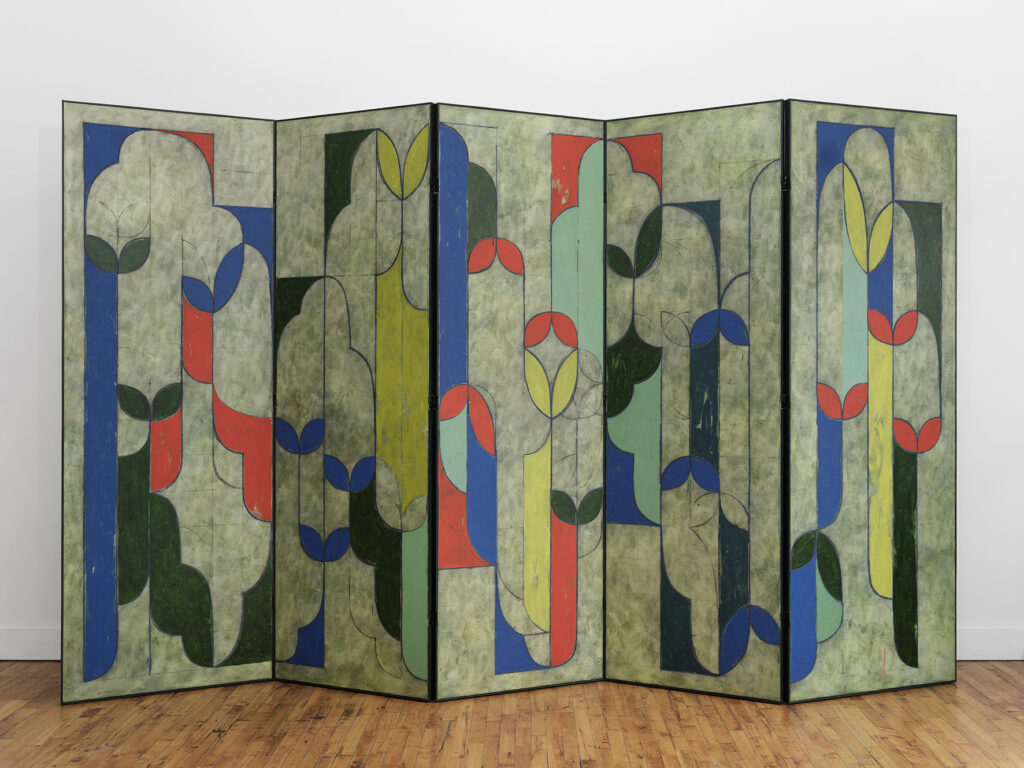
Kamrooz Aram, Privacy Screen for Public Architecture, 2022. Courtesy of the artist and Peter Blum Gallery © Kamrooz Aram, photo Sebastian Bach.
Overall, the exhibition is meticulously organized, with in-depth descriptions of each artwork in the brochure provided at the entrance. The number of artists on display is impressive. In addition, you can also find the works of Giacomo Balla, Man Ray, Yves Klein, Le Corbusier, Carla Accardi, Sol LeWitt, and David Hockney.
Paraventi: Folding Screens from the 17th to 21st Centuries is open through 22 February 2024 at Fondazione Prada, Milan, Italy. The Milan project generates two exhibitions at Prada Rong Zhai in Shanghai (3 November 2023 – 21 January 2024) and Prada Aoyama Tokyo (3 November 2023 – 21 January 2024).
DailyArt Magazine needs your support. Every contribution, however big or small, is very valuable for our future. Thanks to it, we will be able to sustain and grow the Magazine. Thank you for your help!